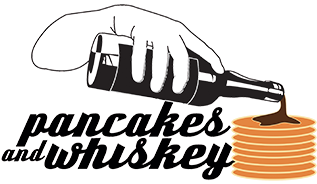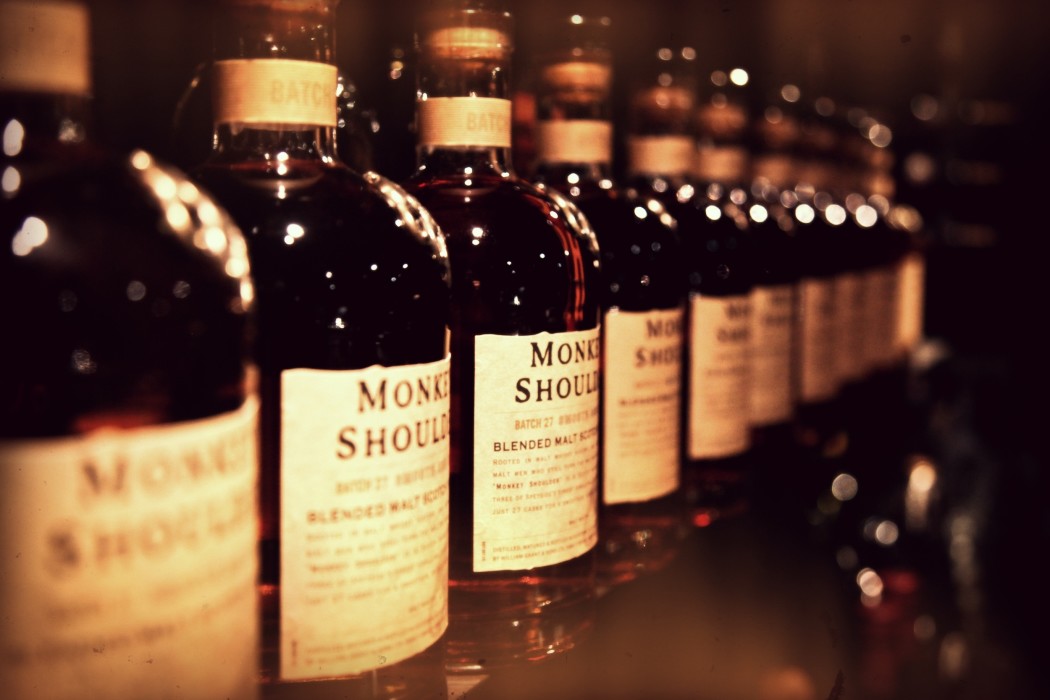Scotchy, Scotch, Scotch. No, this isn’t Ron Burgundy (though I am writing to you from San Diego). I may do a review of Great Odin’s Raven Scotch, but this isn’t that either. We’re going to check out Monkey Shoulder.
First, let’s figure out who was in charge of naming this stuff. So, malted barley is used to make Scotch – I’m sure you’ve heard “single malt” and maybe wondered if it couldn’t find a girlfriend. Wait, wrong kind of single. In this case, single means that only malted barley was used. Malted grains are also the same stuff in your milkshake and those chocolate balls. When you “malt” a grain (it doesn’t have to be barley), you soak the grain in water, the grain germinates and germination is then halted by drying the grain with hot air. Scotch gets its distinctive peat flavor because peat is the fuel for the fire used to dry the grain. Guys with shovels would basically turn the grain by hand and apparently it would lead to one arm hanging slightly lower than the other – and the name Monkey Shoulder was born.
Remember single malt? Well, hold onto your hats, Monkey Shoulder is a triple malt. Three Speyside malts are blended together to create Monkey Shoulder. Since this seems to be Scotch 101 – there are 5 regions in Scotland that produce Scotch. The two you hear about most often are Speyside and Islay. Like terroir in wine, Scotch varies in flavor based on the area it’s made – water, peat, weather all play a part.
OK, I think that’s enough Scotch 101 for now – here are my tasting notes, sláinte! Or should I say, here it goes down into my belly….
Nose: You can definitely smell the peat, this particular Scotch has an earthy tone that’s very pleasant.
Color: Light golden color. Scotch is aged in used barrels, generally American bourbon barrels, since we can only use them once to be able to call the hooch bourbon. The more times the barrel is used, the less color the whiskey gets from the wood.
Taste: Very spicy to begin, the peat flavor builds and then tapers off to an almost sweet finish. But it’s not quite done with you – I can feel a bit of a burn in the back of my throat, after the taste is gone from my tongue. The second sip is much more pleasant (as it usually is). Quite a pleasant dram, all in all.
Cocktails:Blood and Sand – I’d read that Monkey Shoulder performs nicely in cocktails, so I thought I’d give that a try, too. I happen to have Cheery Heering, but if you don’t a Presbyterian is a tasty choice, too. I also used a fresh orange (hello, San Diego), and Noilly Prat vermouth. Heering’s an oddball, but this vermouth is pretty universally available and reasonably priced. One tip on vermouth: it’s fortified wine, so treat it like you would any open bottle of wine. I find that it lasts a bit longer in the fridge immediately after opening, but it has nowhere near the shelf life of your spirits. That’s another reason I like this brand – smaller bottles at about $5 each, I don’t feel bad if I can’t use it all.
ABV: 43% or 86 proof
Price point: $32.99
Comments: I’ll admit, I’ve had limited experience with Scotch, though I have tasted my way through the likes of the Macallan, Glenfiddich 21 and the Lost Distillery, to name a few. I’d say this is not only easy drinking Scotch, but it’s relatively easy on your budget as well (most of the other start at twice that – and go up from there). I’d say if you’re curious about Scotch, give Monkey Shoulder a try!
7.5 pancakes out of 10 – a tasty dram!
Review by Jeanne Runkle




